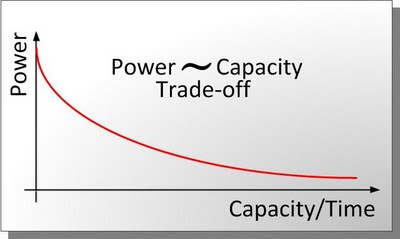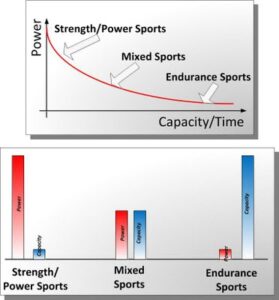Problems of the Periodization of Training in Mixed Sports (Part 1)
Introduction
This article was motivated by couple of things:
- Me trying to figure out the training plan for the next preparatory period for my soccer club, that starts in a month
- A short e-mail discussion with Lyle McDonald regarding the problems of the mixed sports
- A lack of information available on the internet, based on my Google search. A lot of people are confused by periodization models and their application to mixed sports and their own problems, specifics and context. Or as Lyle would say: “Square peg + round hole = bad things”
The term mixed sports comes from Lyle McDonald. He recently published one article on this subject, hopefully also motivated by our short e-mail discussion.

Lyle McDonald’s Sports Continuum
Although, the mixed sports group also contains martial arts, I would be referring to team games in this article under that term.
Power~Capacity
So, Lyle presented a continuum of sports, training and adaptations based on the trade-off between Power~Capacity or Strength/Power~Endurance. Yes, we are dealing with complementarity one more time.

Power~Capacity trade-off
This concept of trade-off between Power~Capacity is also called critical power, or the average power one is able to produce for a certain time duration – the longer the duration, the lower the average power produced and vice versa. And this has a lot to do with energy systems utilized and fatigue created.
Taking Lyle’s graph (and his three group of sports), we can make the following:

Distribution of Power~Capacity in sports
It is important to mention that different parts of the Power~Capacity continuum are inter-related (both cross in terms of correlations, and longitudinal in term of transfer). This has couple of implications.
First, positive – working on one part of the curve may influence other parts of the curve, depending on their closeness. One concept based on this aspect is speed/power reserve. The concept of speed reserve states that by improving maximum (neuromuscular) power, one will be able to maintain sub-maximal power output for longer. Another concept is train slow to be fast. This concept is utilized in endurance sports where one accumulates great volume of low power/intensity workloads to improve average racing power output. These two concepts are especially presented in so called high-intensity sports, or sports of 2-8mins duration, like rowing, swimming and running, where you can attack sport performance from both direction – volume oriented and intensity oriented. In sprinting it has its own name: from long-to-short and from short-to-long.











Responses